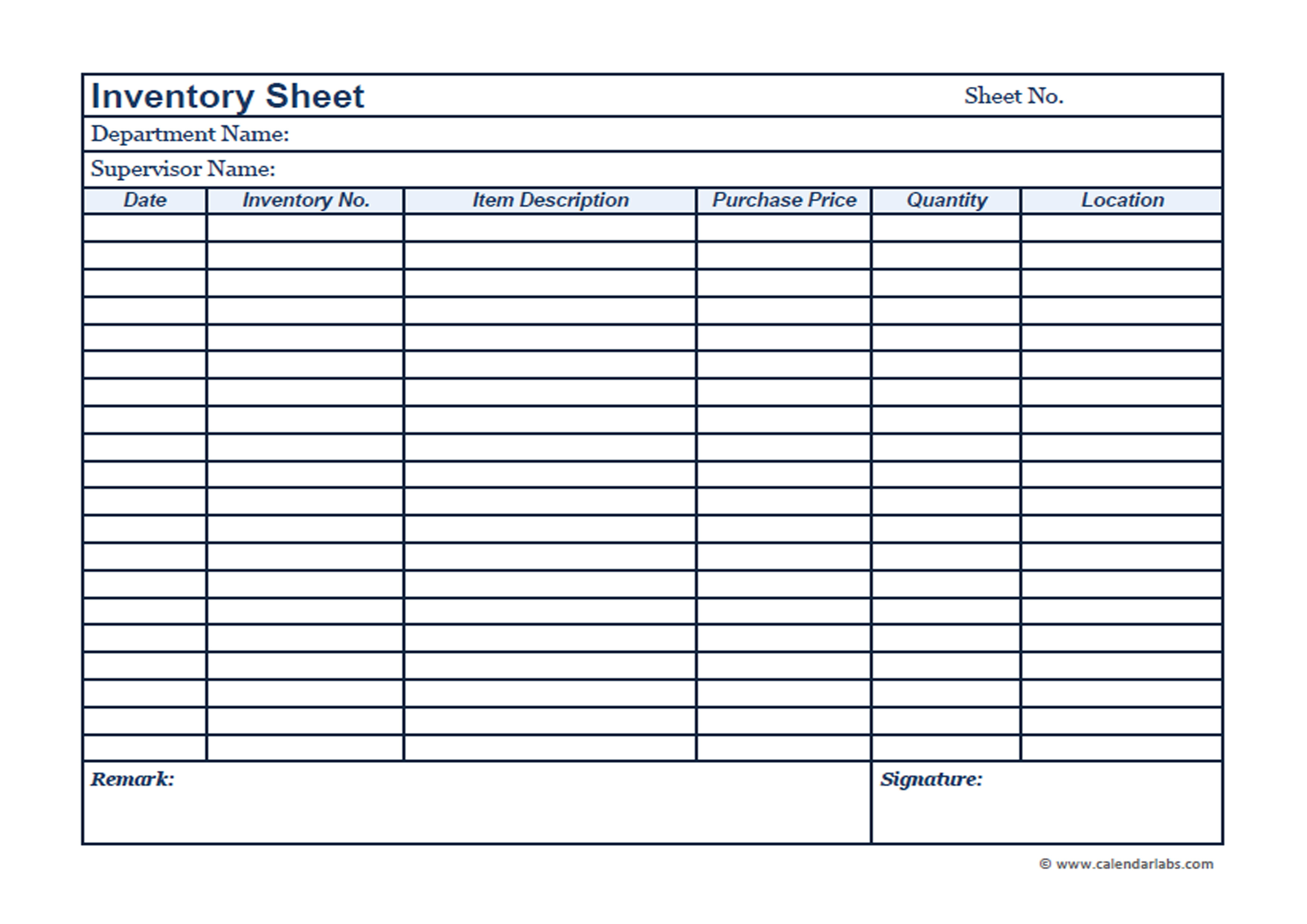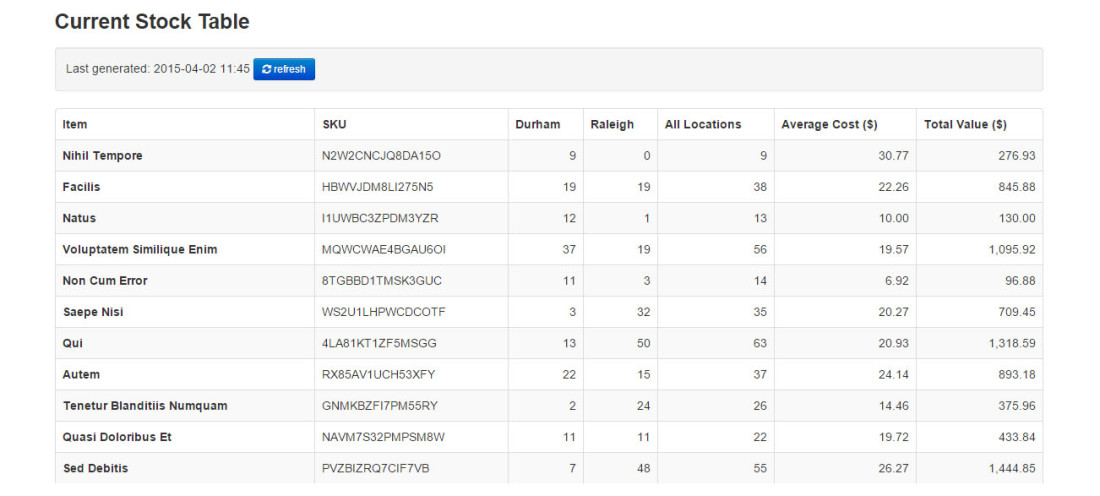In the dynamic world of small businesses, managing inventory effectively can be a daunting task. Introducing the simple inventory system for small business, a game-changer that simplifies inventory management, empowering businesses to streamline operations, reduce costs, and gain a competitive edge.
With its user-friendly interface and essential features, this system transforms inventory tracking into a breeze, providing real-time visibility, accurate reporting, and intelligent insights that drive informed decision-making.
Inventory Management Fundamentals

Inventory management is the process of tracking and managing the flow of goods and materials within a business. It involves activities such as purchasing, storing, and distributing inventory, as well as monitoring inventory levels to ensure that the business has the right amount of inventory on hand to meet customer demand.
There are different types of inventory systems that businesses can use, depending on their specific needs. Some common types of inventory systems include:
- Periodic inventory systems: These systems involve taking a physical count of inventory at regular intervals, such as monthly or quarterly.
- Perpetual inventory systems: These systems keep track of inventory levels in real time, using software or other tools to monitor inventory as it is purchased, sold, and used.
- Hybrid inventory systems: These systems combine elements of both periodic and perpetual inventory systems.
Using a simple inventory system can provide several benefits for small businesses, including:
- Improved accuracy: A simple inventory system can help businesses to improve the accuracy of their inventory records, which can lead to better decision-making and reduced losses.
- Reduced costs: A simple inventory system can help businesses to reduce costs by optimizing inventory levels and minimizing waste.
- Improved customer service: A simple inventory system can help businesses to improve customer service by ensuring that they have the right products in stock when customers need them.
Features of a Simple Inventory System
A simple inventory system should possess certain essential features to effectively manage inventory levels and streamline operations. These features empower businesses to keep track of their stock, optimize storage, and make informed decisions regarding inventory management.
Key Features
- Product Management: Allows businesses to create and manage product profiles, including details such as product name, description, SKU, and category. This feature enables efficient tracking and identification of items within the inventory.
- Stock Tracking: Provides real-time visibility into inventory levels, enabling businesses to monitor stock quantities and identify potential shortages or surpluses. This feature helps prevent overstocking or understocking, ensuring optimal inventory levels.
- Order Management: Facilitates the processing of orders, including the creation of purchase orders, tracking of order status, and management of supplier relationships. This feature streamlines the procurement process and ensures timely delivery of goods.
- Reporting and Analytics: Generates customizable reports and analytics that provide insights into inventory performance, stock turnover rates, and other key metrics. This feature helps businesses identify trends, make informed decisions, and optimize inventory management strategies.
Examples of Software and Tools, Simple inventory system for small business
Several software and tools offer these essential features for simple inventory management, including:
- QuickBooks Inventory: A cloud-based inventory management solution that provides product management, stock tracking, order management, and reporting features.
- Zoho Inventory: A cloud-based inventory management system that offers features such as multi-warehouse management, barcode scanning, and integration with e-commerce platforms.
- NetSuite Inventory Management: A comprehensive inventory management solution that provides advanced features such as demand forecasting, cycle counting, and lot tracking.
Implementation of a Simple Inventory System
Implementing a simple inventory system is crucial for small businesses to streamline their operations and optimize their inventory management. Here’s a step-by-step guide to help you get started:
Step 1: Establish Clear Objectives
Begin by defining your business’s specific inventory needs and goals. Determine what items you need to track, how often you need to track them, and the level of accuracy required.
Step 2: Choose an Inventory Management Method
Select an inventory management method that aligns with your business’s size, industry, and operational needs. Consider methods such as First-In, First-Out (FIFO), Last-In, First-Out (LIFO), or periodic inventory counting.
Step 3: Implement an Inventory Tracking System
Implement a system for tracking inventory levels. This can be done manually using spreadsheets or inventory management software. Ensure that the system provides real-time updates and allows for easy access to inventory data.
Step 4: Establish Inventory Thresholds
Set inventory thresholds to trigger alerts when stock levels reach certain levels. This helps prevent overstocking or stockouts and ensures timely replenishment.
Step 5: Train Staff and Establish Procedures
Train staff on inventory management procedures and ensure they understand their roles and responsibilities. Establish clear guidelines for inventory handling, counting, and reporting.
Step 6: Monitor and Adjust
Regularly monitor your inventory levels and make adjustments to your inventory management system as needed. Analyze inventory data to identify trends, optimize stock levels, and improve overall inventory management efficiency.
Best Practices for Inventory Tracking and Monitoring
* Conduct regular inventory audits to ensure accuracy.
* Use technology to automate inventory tracking and reporting.
* Implement a barcode or RFID system for efficient inventory counting.
* Track inventory in multiple locations and warehouses.
* Use inventory management software to generate reports and insights.
Benefits for Small Businesses

Implementing a simple inventory system can bring numerous advantages to small businesses. It streamlines operations, enhances decision-making, and reduces costs, ultimately contributing to improved profitability and growth.
One of the most significant benefits is cost reduction. A well-managed inventory system helps businesses avoid overstocking, which ties up capital and incurs storage costs. It also minimizes losses due to spoilage, damage, or theft. By optimizing inventory levels, businesses can reduce carrying costs and improve cash flow.
Improved Efficiency
A simple inventory system streamlines business processes and enhances efficiency. Automated inventory tracking eliminates manual counting and record-keeping, freeing up valuable time for other tasks. Real-time inventory visibility enables businesses to respond quickly to changes in demand, reducing the risk of stockouts and ensuring customer satisfaction.
Enhanced Decision-Making
Accurate and timely inventory data provides valuable insights for decision-making. Businesses can analyze inventory trends, identify slow-moving items, and adjust their purchasing and production strategies accordingly. This data-driven approach leads to better inventory management decisions, reduced waste, and improved profitability.
Case Study
A small retail business implemented a simple inventory system and experienced significant benefits. They reduced inventory carrying costs by 15%, improved stock accuracy by 20%, and increased sales by 10% due to reduced stockouts. This success story highlights the tangible benefits that a simple inventory system can bring to small businesses.
Considerations for Small Businesses: Simple Inventory System For Small Business
Selecting a simple inventory system for a small business requires careful consideration of several key factors. Understanding these factors and assessing the business’s specific needs will help in making an informed decision.
To guide the selection process, here’s a checklist of essential features to look for:
Key Features
- Simplicity and ease of use: The system should have an intuitive interface and require minimal training for staff.
- Inventory tracking: Ability to track inventory levels in real-time, including stock on hand, in transit, and on order.
- Product management: Features for adding, editing, and managing product information, including descriptions, images, and SKUs.
- Purchase order management: Functionality to create and track purchase orders, ensuring accurate ordering and inventory replenishment.
- Reporting: Customizable reports for inventory analysis, stock adjustments, and forecasting.
- Integration with other systems: Compatibility with existing accounting or e-commerce platforms to streamline operations.
Potential Challenges
Implementing a simple inventory system may pose some challenges, such as:
- Data accuracy: Ensuring the accuracy of inventory data requires regular audits and training of staff.
- System downtime: Unplanned system outages can disrupt inventory management and operations.
- Staff training: Proper training of staff is crucial to ensure efficient use of the system and accurate data entry.
Overcoming Challenges
To overcome these challenges, consider the following:
- Regular audits: Conduct periodic inventory audits to verify data accuracy and identify discrepancies.
- Backup and redundancy: Implement backup systems and redundancy measures to minimize the impact of system downtime.
- Comprehensive training: Provide thorough training to staff on the inventory system, covering all aspects of data entry and management.
Inventory Tracking and Reporting
Inventory tracking is crucial for small businesses to manage their stock levels, optimize inventory costs, and make informed decisions.
A simple inventory system allows businesses to track inventory movement, including purchases, sales, and adjustments. This information can be used to generate various reports that provide valuable insights into inventory performance.
Inventory Reports for Small Businesses
- Inventory Summary Report: Provides an overview of all inventory items, including quantity on hand, unit cost, and total value.
- Stock Status Report: Shows the current stock levels of each item, highlighting items that are running low or overstocked.
- Inventory Turnover Report: Calculates the rate at which inventory is sold and replaced, indicating the efficiency of inventory management.
- Purchase Order Report: Lists all purchase orders placed, including supplier information, order details, and expected delivery dates.
- Sales Order Report: Provides details of sales orders, including customer information, product quantities, and order status.
These reports help businesses:
- Identify slow-moving or obsolete inventory.
- Forecast demand and adjust inventory levels accordingly.
- Optimize inventory costs by minimizing overstocking and stockouts.
- Improve customer satisfaction by ensuring product availability.
- Make informed decisions about purchasing, production, and sales strategies.
Advanced Features for Growing Businesses

As businesses expand, their inventory management needs evolve. Simple inventory systems may no longer suffice, and advanced features become essential for scalability and efficiency. These features enhance inventory visibility, automate processes, and integrate with other business applications.
Integration with Other Business Applications
Integrating inventory systems with other business applications, such as accounting, CRM, and e-commerce platforms, streamlines operations and improves data accuracy. Automated data exchange eliminates manual data entry, reducing errors and improving efficiency. For example, inventory updates can automatically trigger updates in accounting systems, ensuring accurate financial reporting.
Demand Forecasting and Replenishment
Advanced inventory systems can analyze historical data and market trends to forecast demand and optimize replenishment. This helps businesses maintain optimal inventory levels, preventing stockouts and reducing excess inventory. Demand forecasting also enables businesses to plan production and procurement more effectively.
Inventory Optimization
Inventory optimization techniques, such as ABC analysis and safety stock management, help businesses prioritize inventory and minimize carrying costs. ABC analysis categorizes inventory items based on their value and usage, allowing businesses to focus on managing critical items. Safety stock management ensures that businesses have sufficient inventory to meet unexpected demand fluctuations.
Warehouse Management
Warehouse management features, such as inventory tracking by location, barcode scanning, and cycle counting, improve inventory accuracy and efficiency. These features enable businesses to track inventory movement within the warehouse, optimize storage space, and reduce shrinkage.
Reporting and Analytics
Advanced inventory systems provide comprehensive reporting and analytics capabilities that enable businesses to monitor inventory performance, identify trends, and make informed decisions. Reports can include inventory turnover rates, stock levels, and sales performance, helping businesses optimize inventory management strategies.
Final Thoughts
As your business expands, the simple inventory system seamlessly adapts, offering advanced features that support scalability and integration with other business applications. By embracing this powerful tool, small businesses unlock the key to efficient inventory management, setting the stage for sustained growth and profitability.
FAQ Resource
What are the benefits of using a simple inventory system for small businesses?
Streamlined inventory tracking, reduced costs, improved efficiency, accurate reporting, and informed decision-making.
How easy is it to implement a simple inventory system?
With user-friendly interfaces and step-by-step guides, implementation is quick and straightforward, empowering businesses to start reaping the benefits immediately.
Can a simple inventory system grow with my business?
Absolutely! Advanced features and integration capabilities ensure the system scales seamlessly as your business expands, providing ongoing support for efficient inventory management.